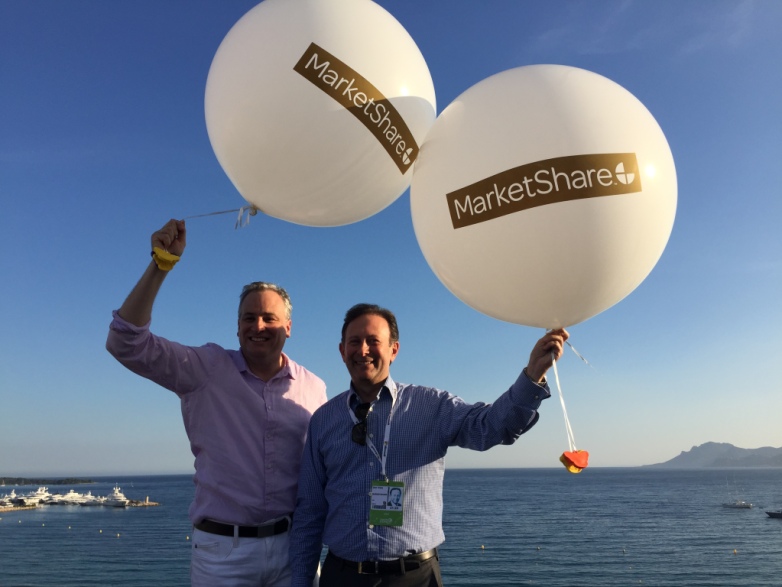51. Wes Nichols – measuring the impact of MarketShare
Manage episode 388718864 series 3282852
Wes was the co-founder with Jon Vein of the marketing and media analytics platform MarketShare, founded in 2006 and sold to Neustar in 2015 for a reported $450 million. At the time, its annual revenues were about $60 million and customers included MasterCard, Intel and Twitter.
Wes is currently a Partner at March Capital, based in L.A., and is a Board Director for data insights company Disqo, healthcare AI firm Suki, ActionIQ, AI semantics software Persado and data infrastructure company Adverity.
MarketShare was a complex (and not inexpensive) offering, combining marketing science and services, that used both top-down (marketing mix) and bottom-up (attribution) methods to tell its big ad-buying enterprise clients (1) what their real return on ad spend (ROAS) was, and (2) how shifting the mix could improve results.
It emerged from Wes’ adventures in direct marketing and media agencies. Running a DM-focused portfolio within Omnicom in the early 2000’s – as he tells Marty in this rousing ride, — he remembers vividly one unsettled ad buyer asking him:
“If people can search for what they want [i.e., use Google] why do I need to invest in my brand anymore?”
The question sat with Wes and echoed other pleas to help determine the real response to ad dollars, on both performance-direct and upper-funnel (brand) values, in an increasingly digital ad-sphere.
At the same time, Wes had run across the work of some credentialed academics – particularly Dominique (Mike) Hanssens of UCLA and David Reibstein of Wharton – who were working on the media measurement knot. Existing solutions included marketing and media-mix models, which could be complex and multidimensional, but were both backward-looking and inexpressive. Also slow: many brands refreshed these models annually, or at best quarterly.
On the other hand, a class of digital multi-touch attribution (MTA) providers were gaining adherents. Tools such as Visual IQ, ClearSaleing (sold to eBay), and then Adometry, Convertro, and Abakus (all acquired), provided improvements on last-click measurement by looking at the user path. MTA’s benefits were intriguing but generally digital-only (not including TV, radio, OOH, etc.) and of primary use in assessing the trade-off between paid search and digital display.
So MarketShare is one of those handful of startups that began life in the academy. (Others were Abakus, the CDP Amperity and the analytics tool Custora.) Wes and his co-founder Jon Vein, whom he met through mutual friends, spent a couple years bootstrapping the solution and adapting Hanssens and others’ work into a commercial solution. That took about two years and yielded some patents.
“I knew we had to get the math right,” Wes tells Marty.

How did MarketShare work?
MarketShare distinguished its approach from last-click, first-click and so-called “matched pairs” methods. The latter was apparently used by MTA providers, who would acquire voluminous path data for anonymous consumers (via cookie log files, generally), sift and compare similar paths. Ideally, there were enough paths to find sufficient examples with (and without) particular exposure types.
Guided by Hanssens and others, MarketShare took a more holistic approach that included experimental design and targeting based on persuadability. So-called ‘uplift models’ recognize that different portions of a given audience have different levels of persuadability: some will buy anyway (‘sure things’), some will never buy (‘lost causes’), others hate ads and some portion can be influenced. Who are they?
In addition to recognizing uplift, MarketShare’s models adjusted bottom-up attribution with top-down econometric methods. In this way, it could recognize offline and non-marketing effects, such as TV and radio, weather, seasonality, trade promotions, alien invasions, etc. Algorithmic models at the user-level could be linked with these top-down methods.
Data was onboarded via email systems, direct mail databases, cookie log files, media plans, point-of-sale data, etc. Additional data was linked for geographies (e.g., weather, store promotions) and time series. Wes admits that data collection and transformation, in the early years, was “difficult.” Services were required.
Methods used by the team included logit choice models for individual consumers, transformed to deal with multiple touches, frequency, etc.; systems of regression model equations for marketing mix, considering intermediate outcomes using hierarchical Bayesian priors; and discrete choice models for attribution.
Ultimately, MarketShare built a market-level model, translating each market-level effect into a currency (like sales). Various granular time series components were incorporated into a decomposition model to build new composite variables, with factors or ‘conduit variables.’ These accounted for effects such as offline media, pricing changes, seasonality, competitors, etc.
The Neustar deal came “out of the blue,” says Wes, based on a meeting with a board member during a pre-IPO corridor. Shortly after acquiring MarketShare, Neustar was taken private and ultimately restructured. Some of its data assets were sold to Matt Spiegel and a team at TransUnion last year.
Stay to the end to hear about Wes’ interesting sideline activity – a first for Paleo Ad Tech – as an LAPD Reserve Officer. Yes, he went through the entire Police Academy and has a speedy draw, friends. Perps beware.
65集单集




